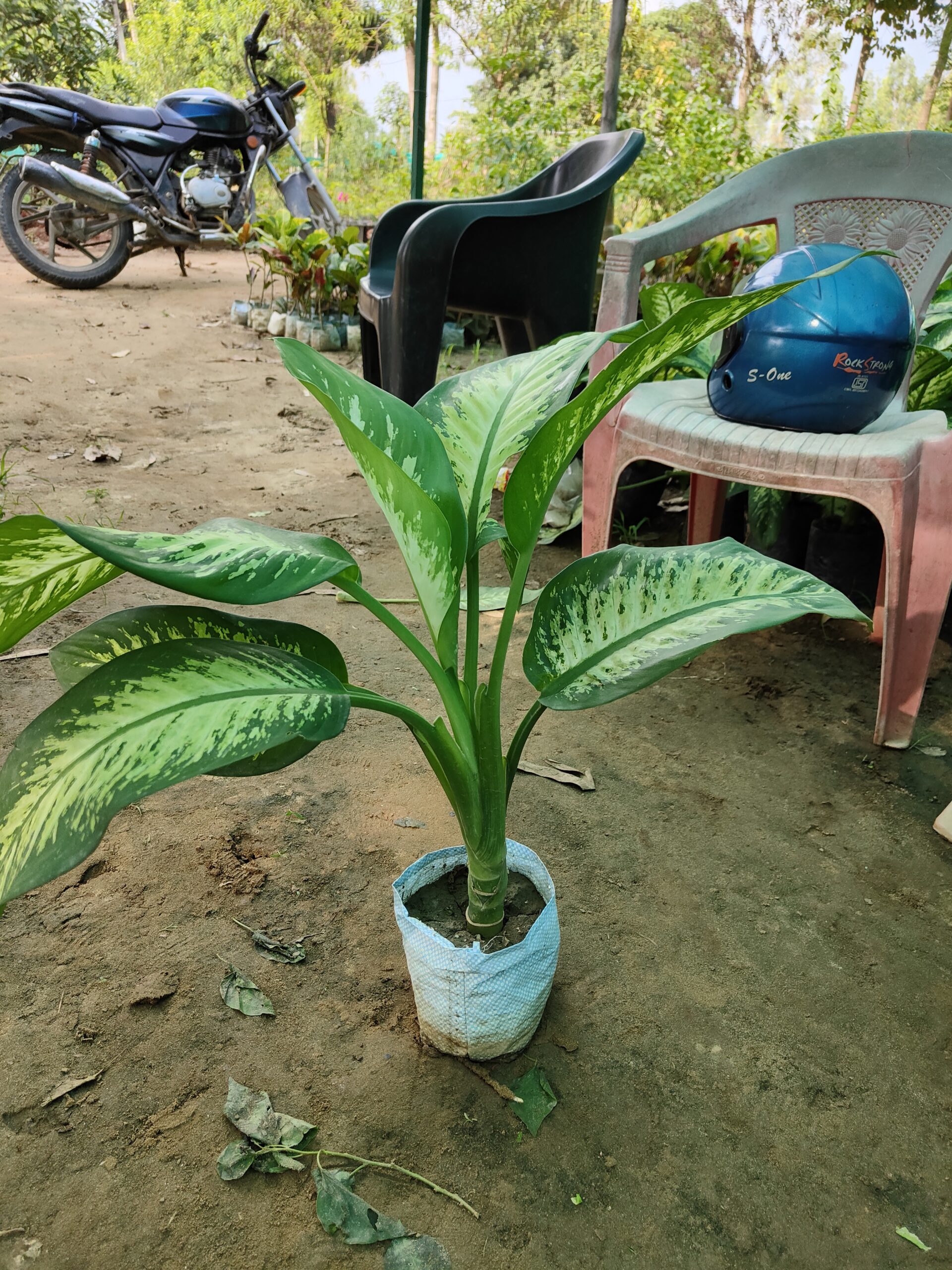
Growing a dieffenbachia plant can be rewarding! Here’s a simple guide to help you.
Light:
Dieffenbachia prefers bright, indirect light. Avoid direct sunlight as it can scorch the leaves. It can tolerate lower light conditions but may grow slower
Watering:
Keep the soil evenly moist but not waterlogged. Allow the top inch of soil to dry out slightly between waterings. Overwatering can lead to root rot, so it’s essential to strike a balance.
Humidity:
Dieffenbachia enjoys high humidity. You can increase humidity by misting the plant regularly or placing it on a pebble tray filled with water.).
Temperature:
Keep the plant in a warm environment, ideally between 65-75°F (18-24°C). Avoid cold drafts or sudden temperature fluctuations.).
Soil: Plant dieffenbachia in well-draining potting soil. A mix of peat moss, perlite, and vermiculite works well.
Fertilizing:
Feed the plant monthly during the growing season (spring and summer) with a balanced liquid fertilizer diluted to half strength.).
Pruning: Trim yellow or brown leaves to encourage new growth and maintain the plant’s appearance.). Wear gloves when handling the plant, as its sap can cause skin irritation.
Repotting:
Repot the dieffenbachia every 1-2 years or when it outgrows its current container.). Choose a pot one size larger and refresh the soil.
Pests and Diseases:
Keep an eye out for pests like spider mites, mealybugs, and scale insects. Treat any infestations promptly with insecticidal soap. Watch for signs of root rot and adjust watering if necessary.
By following these tips, you can help your dieffenbachia thrive and grow into a beautiful, lush plant.).
Of course Here are some additional details to help you successfully grow dieffenbachia.).
Propagation:
Dieffenbachia can be propagated through stem cuttings. Simply cut a section of stem with at least two nodes, remove the lower leaves, and place the cutting in water or moist soil.). Keep the soil consistently moist until roots develop, which usually takes a few weeks.
Pruning for Shape:
You can prune dieffenbachia not just for removing dead or yellowing leaves but also to control its shape.). Pinch back the growing tips to encourage bushiness, or trim back leggy stems to maintain a compact appearance.).
Toxicity:
Keep in mind that dieffenbachia is toxic if ingested, particularly the leaves and stems.). Keep it out of reach of pets and small children, and wash your hands after handling the plant.
Seasonal Care:
In the winter months, when growth slows down, reduce watering frequency to prevent waterlogged soil.). Also, avoid placing the plant near cold drafts from windows or doors.
Support:
If your dieffenbachia grows tall and becomes top-heavy, you may need to provide support with a stake or bamboo cane to prevent it from toppling over.).
Rejuvenation:
If your dieffenbachia becomes leggy or loses its lower leaves over time, you can rejuvenate it by cutting it back severely.). Cut the stems back to a few inches above the soil level, and it should produce new growth from the remaining stems.
Pest Prevention:
To prevent pest infestations, regularly inspect your plant for any signs of pests or diseases.). Quarantine new plants before introducing them to your collection to prevent introducing pests.
With proper care and attention to these details, your dieffenbachia should thrive and bring beauty to your home or office space.).